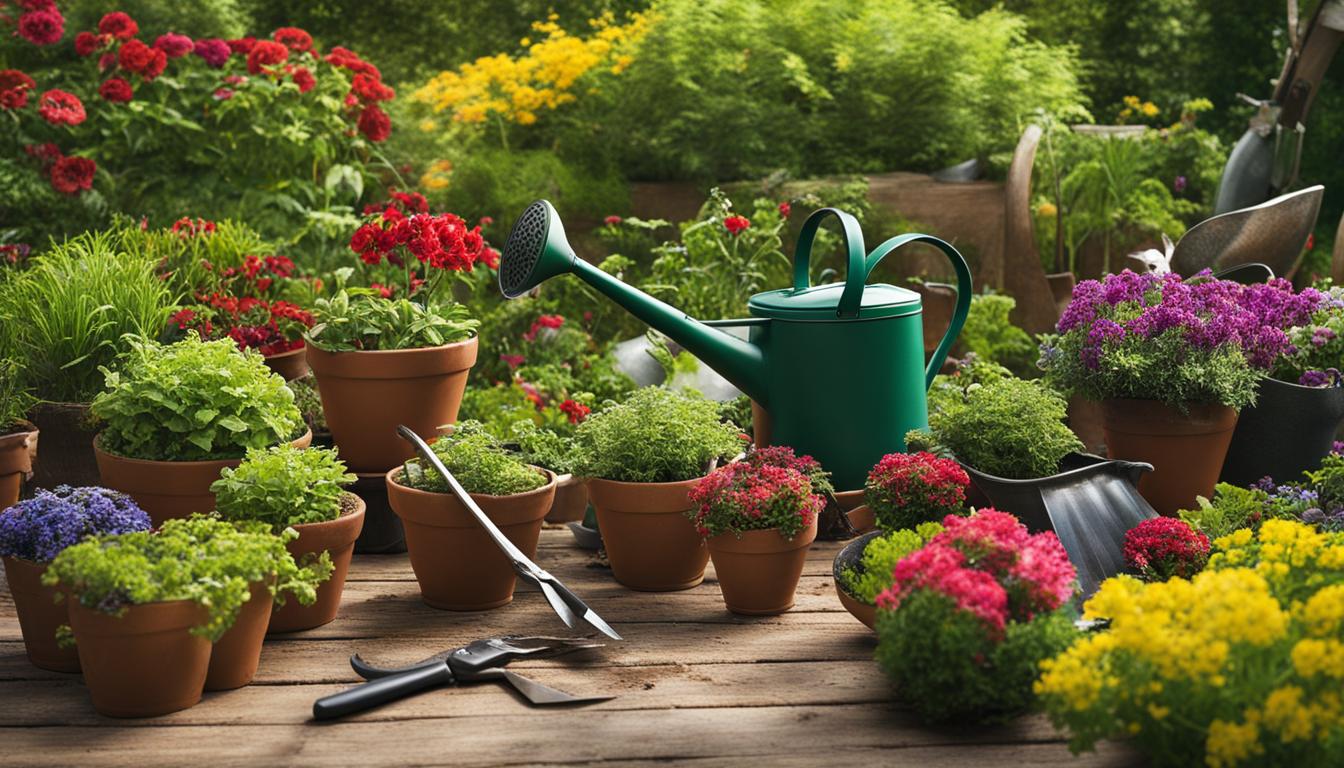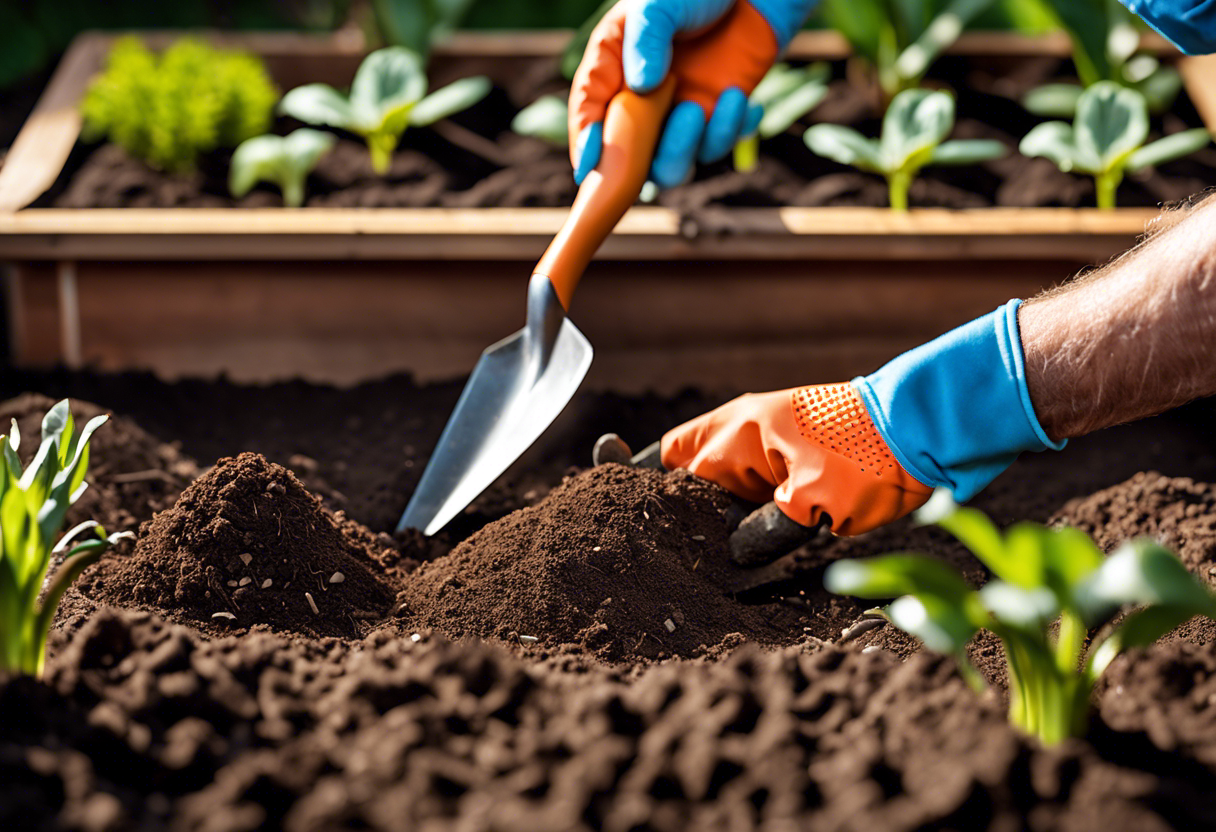Ever found yourself knee-deep in compost, wrestling with a stubborn weed and wondering if there was an easier way? Well, you’re not alone. Gardening can be a tricky business! But don’t fret, because this is where the Essential How-to Guides for Every Gardener comes to your rescue.
From understanding the nitty-gritties of soil types to mastering the art of pruning, these guides aim to transform you from a gardening greenhorn into a green-thumbed guru. So buckle up and get ready to dig into some seriously fertile knowledge. Let’s turn that thumb from brown to green!
Key Takeaways
- The blog post provides specific guides on essential gardening tasks such as soil preparation, planting, watering, pruning, and pest control.
- It emphasizes the importance of understanding plant needs and adapting gardening techniques accordingly.
- The post also offers advice on organic gardening practices and the use of compost for nutrient-rich soil.
- Lastly, it highlights the benefits of regular garden maintenance for plant health and aesthetic appeal.
What are the Basics Every Gardener Should Know?
In the world of gardening, there’s a lot to learn. But don’t fret! We’ve got your back with these essential how-to guides for every gardener. Let’s start with some gardening basics that’ll help you get your green thumbs dirty.
Understanding Different Types of Soil
Soil isn’t just dirt, folks. It’s the lifeblood of your garden! The type of soil you have can make or break your plants’ growth. That’s why understanding soil types in gardening is so important.
Different soils have different nutrients and drainage capabilities. Some plants love clay soil, while others prefer sandy or loamy soil. Knowing this can save you a lot of heartache (and dead plants).
Recognizing Essential Gardening Tools
Next up on our list of beginner gardening tips is getting to know your tools. You wouldn’t go into battle without knowing how to use your weapons, would ya? Well, gardening is kind of like a battle… against weeds and pests!
There are some essential gardening tools that every gardener should be familiar with. A good shovel, a sturdy rake, and a reliable pair of pruning shears are just the beginning.
Each tool has its own specific use in the garden, from digging holes to cutting branches. So get acquainted with them – they’re going to be your best friends!
Knowing Your Plant Zones
Lastly, let’s talk about plant zones. No, we’re not talking about alien invasions or sci-fi movies here! Plant zones refer to geographical areas where certain plants thrive best.
Understanding these zones is crucial for successful gardening because it helps you choose the right plants for your area. If you live in a hot desert zone and try growing water-loving ferns… well, let’s just say it won’t end well.
So there you have it, folks! Some essential gardening knowledge to get you started on your journey. Remember, every gardener was once a beginner. So don’t be afraid to make mistakes and learn as you go. Happy gardening!
How to Start a Garden from Scratch?
Starting a garden from scratch can be a daunting task, but with the right beginner gardening tips, it becomes an enjoyable journey. The key steps in this garden setup guide include choosing the right location, preparing the soil, and selecting suitable plants.
Choosing the Right Location for Your Garden
When it comes to garden location selection, you’ve got to play detective. Look for clues like sunlight exposure and water drainage patterns. Most plants love sunlight, so find a spot that gets at least 6 hours of sun daily.
But don’t forget about water drainage! You don’t want your precious greens swimming in puddles after every rainstorm. So, choose a spot where water doesn’t pool.
Preparing the Soil for Planting
Now let’s talk dirt – or rather, soil! Soil preparation methods are crucial for your garden’s success. Start by testing your soil’s pH level.
You can grab a test kit from any garden store. If your soil is too acidic or alkaline, you’ll need to balance it out with some lime or sulfur respectively.
Next up is adding nutrients to your soil. Compost or manure works wonders here! Just make sure it’s well-rotted to avoid burning your plants.
Selecting Suitable Plants for Your Garden
Finally, we’re onto plant selection – arguably the most fun part of this Essential How-to Guides for Every Gardener! When choosing garden plants, consider their suitability for your specific conditions.
Do they match your soil type? Can they handle your region’s climate? And most importantly, do they meet your aesthetic or functional goals? Whether you’re going for a Zen-like oasis or a riotous explosion of color, there’s a plant out there that fits the bill perfectly!
How to Maintain a Healthy Garden?
A healthy garden is the pride of every gardener. It’s not just about having green fingers, but also about understanding your plants’ needs and meeting them. The Essential How-to Guides for Every Gardener recommends focusing on three key aspects: watering, fertilizing, and pruning/weeding. These garden maintenance tips are crucial in cultivating healthy garden practices.
Watering Techniques for Different Plants
Watering might seem simple, but it’s more than just pouring water onto your plants. Different plants have different hydration needs. Some prefer their soil to be consistently moist, while others like it dry between watering. Understanding these plant watering techniques and water requirements for plants is essential.
For instance, succulents need less water compared to ferns that thrive in damp conditions. So, if you’re unsure about a plant’s water needs, do some research! Remember, overwatering can be as harmful as underwatering. Proper plant hydration is all about balance.
Fertilizing: When and How Much?
Next up is fertilizing – another vital aspect of maintaining a healthy garden. But when should you fertilize? And how much? Well, most plants benefit from regular feeding during their growing season – usually spring and summer.
The amount of fertilizer depends on the type of plant and its nutrient requirements. For example, flowering plants often need more phosphorus to bloom well while leafy greens prefer nitrogen-rich fertilizers.
Understanding these fertilizer application timings and the right amount of fertilizer for plants can make a significant difference in your garden’s health and productivity.
Pruning and Weeding: Keeping Your Garden Tidy
Last but certainly not least is pruning and weeding – two tasks that might seem tedious but are essential for keeping your garden tidy. Pruning helps control plant growth and encourages blooming while weeding prevents unwanted plants from stealing nutrients from your garden.
The importance of pruning cannot be overstated. It helps maintain plant health by removing dead or diseased branches. As for weeding, there are several effective weeding methods, including hand-pulling and using a hoe or weed puller.
Remember, maintaining garden tidiness through pruning and weeding is not just about aesthetics. It’s also about creating the best environment for your plants to thrive.
What are Common Gardening Problems and Solutions?
Every gardener, newbie or seasoned, faces a few common gardening problems. These include pesky pests, stubborn plant diseases, and unpredictable weather challenges. But don’t fret! Our Essential How-to Guides for Every Gardener have got you covered with practical solutions to overcome these issues.
Dealing with Pests in Your Garden
Ah, pests! Those little buggers can wreak havoc in your garden. Identifying them is the first step towards effective control. Look out for signs like chewed leaves or discolored plants. Once you’ve identified the culprit, it’s time to take action.
Now comes the tricky part – getting rid of them without harming your precious greens. This is where natural pest control methods come into play. From homemade sprays to introducing beneficial insects, there are plenty of safe pest removal techniques that won’t harm your plants.
Addressing Common Plant Diseases
Next up on our list of gardening woes are plant diseases. These sneaky illnesses can creep up without warning and turn your lush garden into a sickly sight. So how do we tackle this? By learning to identify common plant diseases and their symptoms.
Yellowing leaves could indicate nutrient deficiency while spots might suggest fungal infection. Once you’ve diagnosed the problem, treatment becomes easier. There’s a range of organic treatments available that can help nurse your plants back to health.
Overcoming Weather-Related Challenges
Lastly, let’s talk about weather – the one thing we gardeners have no control over! Different climates pose different challenges but don’t worry; there are ways to protect your plants from extreme weather changes.
In hot climates, ensure adequate watering and shade for your plants. In colder regions, consider using mulch or greenhouse structures to provide warmth. Remember, every climate has its own set of gardening rules so adapt accordingly and keep those green thumbs up!
How to Grow Specific Types of Gardens?
When it comes to Essential How-to Guides for Every Gardener, understanding how to grow different types of gardens is key. Whether you’re interested in a vegetable, flower, or herb garden, each has its unique requirements.
Starting a Vegetable Garden
Ready to get your hands dirty with some vegetable gardening basics? First things first, choose the right location. Your veggies need plenty of sunshine and well-drained soil.
Next up is selecting suitable vegetables for your garden. Think about what you love to eat and also consider your local climate conditions. Remember folks, tomatoes won’t thrive in Alaska!
Creating a Flower Garden
Now let’s talk about creating a blooming beautiful flower garden. The secret sauce here is picking flowers based on your local climate and personal aesthetics.
You might be tempted by those exotic orchids but remember, they might not appreciate the chilly winters! So stick with what works best in your area – that’s one of the top flower gardening tips.
Establishing an Herb Garden
Finally, let’s delve into the world of herb gardens. Whether you’re into cooking or natural remedies, choosing herbs for your garden should reflect that.
Basil and rosemary are great if you love Italian cuisine, while lavender and chamomile are perfect for home-made teas and relaxation aids. That’s the beauty of growing herbs at home – it’s all up to you!
To Wrap Up
We’ve dug deep into the dirt of gardening wisdom, unearthing nuggets of green-thumb gold. Our journey through Essential How-to Guides for Every Gardener has been like a garden party – fun, informative, and full of surprises.
So, don’t just stand there with your watering can! Get out there and turn your garden into a blooming paradise. Remember, every gardener was once a beginner. Happy gardening!





